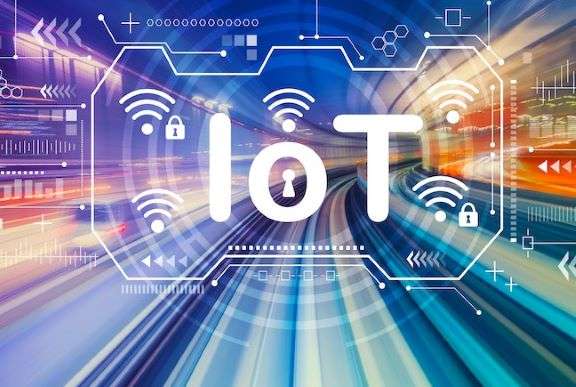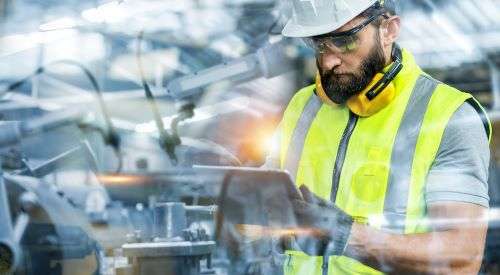
You’ve probably heard the term ‘Internet of Things’ or ‘IoT’ before, but what exactly is it? In short, the Internet of Things refers to the interconnectedness of physical objects and smart devices that are able to collect and exchange data.
The Internet of Things has the potential to change the way we live our lives, by making everyday tasks easier and more efficient. In this blog post, we at DSL will discuss what the Internet of Things is, and some of the ways that it is changing the world we live in.
What Does the IoT Include?
What is the Internet of Things? The Internet of Things is a term that is used to describe the ever-growing network of smart devices that are connected to the internet. But what does that mean, exactly?
In order for an object to be considered part of the Internet of Things, it must be able to connect to the internet and share data. This might be something as simple as your fitness tracker sending your steps data to your phone or as complex as a self-driving car sending data about traffic and road conditions to a central database. But the object doesn’t necessarily have to be high-tech; any physical object that can collect and exchange data can be part of the Internet of Things.
How the IoT Works
The Internet of Things relies on three main components: sensors/connected devices, connectivity and data analytics.
Sensors/connected devices
These are the physical objects that are connected to some form on internal network to communicate or are connected to the internet. These connected devices collect data about themselves or their surroundings and send that data back to a central database.
Connectivity
This is how the IoT devices are able to connect to one another, a hub or to the internet so that they can transmit their data. This is typically done through WiFi or Bluetooth connections.
Data analytics
This is where all of the collected data is stored and analysed. Data analytics software is used to make sense of all of the collected data and turn it into usable information. For example, if you’re a manufacturer, data analytics could tell you which machines are producing too many defective widgets. Or, if you’re a city planner, data analytics could tell you which streets are most congested at what times of day.
The Benefits of the IoT
 The Internet of Things offers a variety of benefits, including improved efficiency, greater insight and increased automation.
The Internet of Things offers a variety of benefits, including improved efficiency, greater insight and increased automation.
Using the previous examples, say you’re a manufacturing company that produces widgets. With the Internet of Things, you could connect your machines to the internet so that they can share data about their output with each other. This would allow you to identify when a machine is going down so that you can fix it before it stops working entirely.
Again, as mentioned above, let’s say you’re a city planning department. You could use IoT connected devices to collect data about traffic patterns so that you can make your roads more efficient.
These are five of the most important benefits of the Internet of Things:
- Increased efficiency and productivity
- Improved customer service
- Reduced costs
- Increased safety and security
- Collect data for improved decision making
Increased efficiency and productivity
One of the main benefits of the Internet of Things is that it can increase efficiency and productivity in both our personal and professional lives.
For example, let’s say you’re a salesperson who spends a lot of time on the road visiting clients. With an IoT-enabled car, you can use voice-activated commands to make hands-free calls, send emails, and even book appointments – all while you’re driving. This means you can make better use of your time and get more done during the day.
Improved customer service
Another benefit of the Internet of Things is improved customer service. With IoT connected devices, businesses can collect data about their customers’ behaviour and preferences. This data can then be used to improve the efficiency of operations and the quality of products or services.
Reduced costs
The Internet of Things can also help businesses reduce costs by automating tasks and increasing efficiency.
For example, many office buildings now use sensors to automatically turn off lights when no one is in a room, which saves energy and lowers utility bills.
Increased safety and security
The Internet of Things can also be used to increase safety and security by monitoring conditions in real time and issuing alerts when problems are detected.
For example, some hospitals are now using sensors to monitor patients’ vital signs so that staff can be alerted immediately if there’s a change in condition. This allows for quicker treatment and potentially saves lives.
Additionally, many cities are using CCTV cameras equipped with facial recognition software to detect potential criminals, which could help prevent crime before it happens.
Collect data for improved decision making
By analysing this data, businesses can gain insights that they otherwise would not have had – insights that can help them optimise their operations, better serve their customers, and stay ahead of their competitors.
The Internet of Things is revolutionising the way we live and work and there are countless benefits to implementing IoT systems in both our personal and professional lives.
Whether you’re looking for ways to save time or money, improve customer service or decision making, or simply want to increase safety and security, the Internet of Things has a lot to offer.
Examples of How the IoT is Being Used Today
 IoT devices usually have sensors that can gather data, such as temperature readings or movement signals. This data can then be used to provide information to users and automate certain processes.
IoT devices usually have sensors that can gather data, such as temperature readings or movement signals. This data can then be used to provide information to users and automate certain processes.
From fitness trackers to industrial sensors to home appliances, there are now more connected devices than there are people on earth. And this number is only going to continue to grow, with estimates that there will be over 75 billion IoT devices by 2025.
But what does this mean for everyday life? How is the Internet of Things actually being used today? Below are some examples of how the IoT is transforming homes, cities, healthcare and businesses.
Home automation
One of the most popular applications of the Internet of Things is home automation. This refers to the use of consumer IoT devices to automate tasks in the home like controlling the thermostat, turning on lights, or opening the garage door.
Home automation can make life more convenient and save energy by reducing unnecessary power consumption.
For example, smart devices can monitor energy use in the home and adjust settings accordingly to help improve energy efficiency.
Smart cities
The IoT is also being used to build so-called ‘smart cities’.
By installing sensors and connective infrastructure throughout city streets and buildings, municipalities can collect data on everything from air quality to traffic patterns.
This data can then be used to make evidence-based decisions about how to improve city services and infrastructure.
Healthcare
IoT technology has many benefits in healthcare as well. IoT connected health devices have been used to enable remote patient monitoring, allowing doctors to keep track of a patient’s health without them needing to be in their physical presence.
This not only helps with providing accurate diagnoses, but it can also help reduce the cost of healthcare.
Predictive maintenance
Businesses are using IoT devices for predictive maintenance purposes. By outfitting industrial equipment with sensors that collect data on things like temperature and vibration, businesses can get real-time feedback on the health of their equipment. This allows them to schedule repairs before problems arise, which reduces downtime and helps keep costs low.
Another way the IoT is being used is for industrial applications. In factories, IoT sensors can be used to track production line efficiency and optimise performance. Again, smart industrial devices can be used for maintenance purposes, helping identify any potential problems before they become costly issues.
The Internet of Things is slowly but surely becoming a part of everyday life. From automated homes to smart cities to predictive maintenance in factories, the IoT is transforming the way we live and work.
And this is just the beginning. As more and more IoT devices become connected, we can expect even more amazing innovations in the years to come.
How to Get Started With the IoT
It can be daunting to try to wrap your head around it. But once you understand what the IoT is and how it works, you’ll see how easy it is to get started with it.
There are many ways to get started with the Internet of Things, but one of the best ways is by using an IoT platform. An IoT platform provides a centralised location for storing data, analysing data and triggering actuators. It also offers developers a way to create applications that take advantage of the data collected by the sensors.
There are many different IoT platforms available, so you need to do your research before choosing one. Once you’ve chosen a platform, you can start connecting IoT devices and actuators and begin reaping the benefits of the Internet of Things.
IoT Security Concerns
The IoT offers benefits like increased efficiency and greater insights but it also comes with some security concerns that should be considered before jumping on board.
As with any new technology, there are potential risks associated with the IoT. Because these smart devices are connected to the internet, they’re also vulnerable to hacking and cyber attacks. And because they collect data about our everyday lives, there are also privacy concerns to consider.
Because connected devices can be transmitting data over the internet, there is always the possibility that that data could be intercepted by hackers.
Additionally, because data is being collected and stored in central databases, there is also the possibility for those databases to be hacked.
As such, it’s important to make sure that any IoT devices you use have robust security systems in place to protect your data.
The Future of the IoT
While the IoT is already having a positive impact on our lives, its potential applications are far from exhausted. In the future, we can expect to see even more widespread adoption of this technology across all industries.
For example, autonomous vehicles are already being tested on public roads. While there are still some challenges that need to be addressed before these vehicles can be widely adopted, it’s only a matter of time before they become a common sight on our roads. Similarly, smart cities are becoming more prevalent as cities around the world invest in infrastructure that makes use of sensor data to improve urban planning and management.
The IoT is a rapidly growing field with endless potential applications. In this blog post, we’ve taken a look at some of the ways the IoT is being used today and explored some of its potential future uses. As this technology continues to develop, we can expect to see even more transformative changes in our lives and workplaces.
However, as with any new technology, we’ve seen that there are also risks associated with its use. It’s important to stay informed about both the benefits and risks of the IoT so that you can make an informed decision about whether or not it’s right for you.
In conclusion, the Internet of Things is a rapidly growing technology that has huge potential for improving our day-to-day lives. By connecting everyday devices together, we can enjoy increased convenience and efficiency when completing tasks such as grocery shopping or energy management.
Additionally, businesses are using this technology to increase production line efficiency and healthcare providers are using it to improve diagnosis accuracy. As the IoT continues to grow, so too will its impact on our world.

